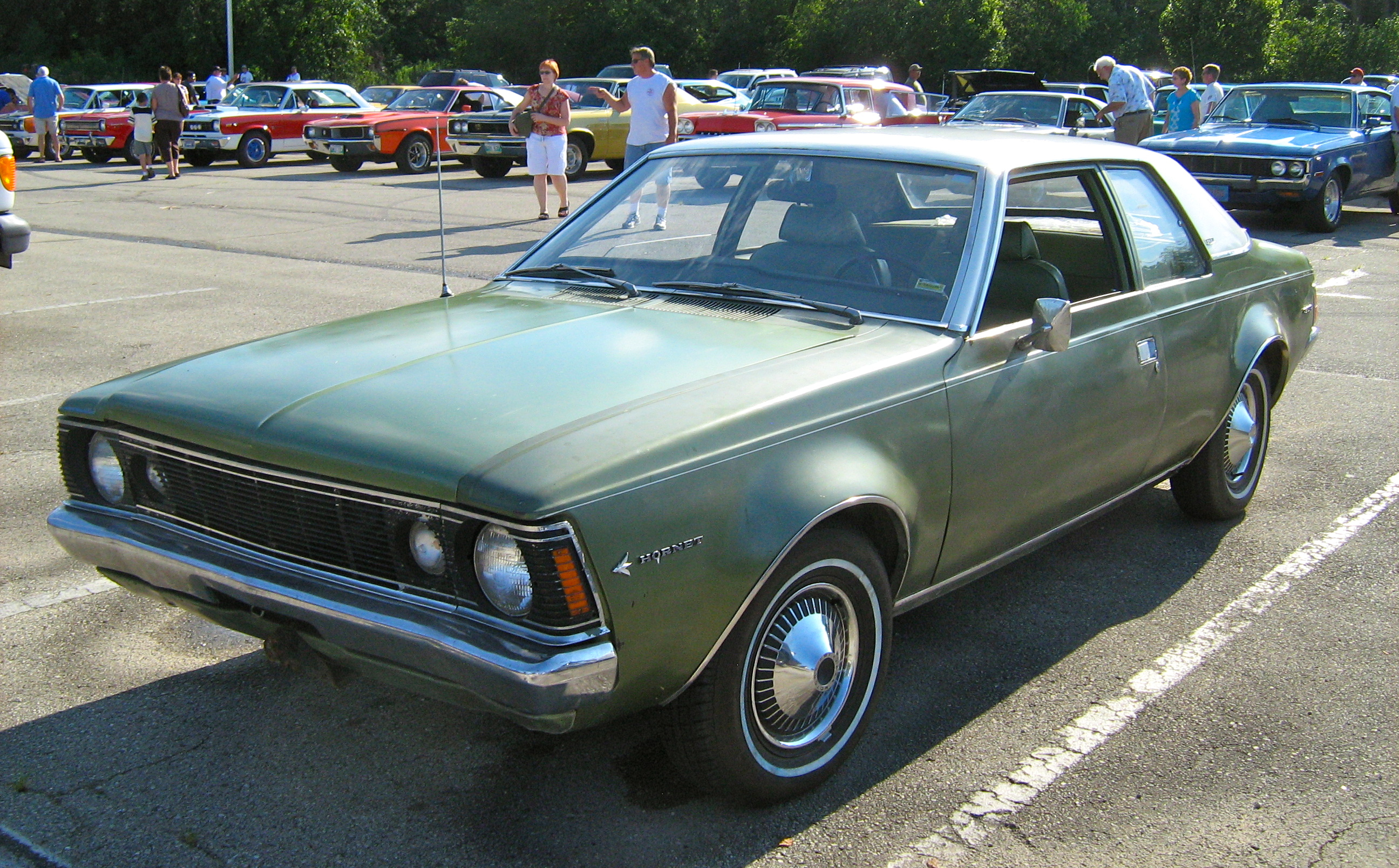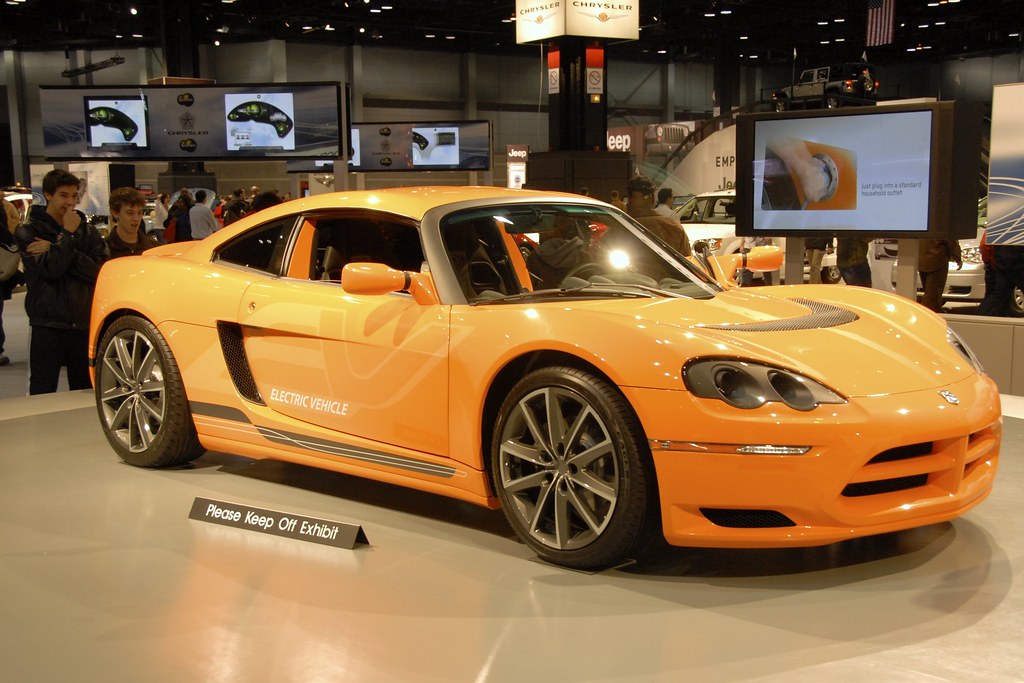
Ah, the concept car. It’s the automotive industry’s equivalent of a rock star on a stage, a dazzling display of what’s possible when designers and engineers are given a blank canvas and a mandate to dream big. These aren’t just vehicles; they’re rolling manifestos, declarations of intent, and often, tantalizing glimpses into a future that, sadly, never quite materializes. We see them, we salivate over them, and then, more often than not, they vanish, leaving us to wonder what magnificent machines might have been. But their legacy lives on, burning brightly in the minds of gearheads everywhere.
Every year, motor shows around the globe become equal parts candy store and heartbreak. One moment, you’re standing face-to-face with a carbon-tub prototype that promises interstellar speeds and physics-defying performance, its lines sculpted with an almost alien beauty. The next, it’s gone, replaced by another sensible crossover, and the dream fades. Yet, for all the practicality and profit margins that dictate what makes it to production, there’s a certain magic in these unfulfilled prophecies, these automotive what-ifs that continue to keep us awake at night.
So, prepare yourselves, because we’re about to embark on a thrilling retrospective, a deep dive into the extraordinary world of the coolest concept cars that, despite their undeniable brilliance and groundbreaking potential, never quite made it to the dealerships. These are the machines that pushed boundaries, challenged conventions, and offered a glimpse of a different reality. Join us as we lift the veil on these magnificent, yet ultimately unproduced, automotive legends.

1. **Dodge Copperhead**The Dodge Viper was, without a shadow of a doubt, an awesome sports car. It roared onto the scene as one of the first performance cars to shatter the 400 horsepower barrier, a number that, at the time, felt almost mythical. However, its raw, untamed nature came with a few caveats: a notoriously high price tag that put it out of reach for many, and a level of practicality best described as ‘challenging’ for the casual driver. Enter the Dodge Copperhead, a brilliant sports car concept that aimed to offer a more sensible, yet equally thrilling, alternative to its venomous sibling.
Unveiled with the promise of more accessible fun, the Copperhead concept was a breath of fresh air. It boasted a V-6 engine and, crucially for driving enthusiasts, was a pure rear-wheel-drive machine. Its lightweight, modern design gave it a fantastic recipe for driving pleasure, a formula not dissimilar to the Mazda Miata’s enduring success years earlier. This was a car engineered for smiles, for winding roads, and for connecting driver to asphalt in a way that didn’t require a second mortgage.
What truly makes the Copperhead’s demise a head-scratcher is that the Dodge brand was riding a wave of success throughout the 1990s. The market for a more practical, yet still exhilarating, sports car would have been undeniably robust, teeming with enthusiasts eager to snap up such a vehicle. It’s truly curious why Chrysler, seemingly at the peak of its powers, opted not to unleash this beauty onto the market. The Copperhead remains a tantalizing ‘what if,’ a sports car that could have perfectly blended performance with everyday usability.
Car Model Information: 2005 Dodge Viper SRT10
Name: Dodge Copperhead
Caption: Walter P. Chrysler Museum
Manufacturer: Chrysler Corporation
Aka: Dodge Concept Car,Dodge Concept Vehicle
Production: 1997 (1 built as prototype)
Designer: John Herlitz
Class: Sports car
BodyStyle: Roadster (automobile)
Platform: Dodge Viper
Layout: FR layout
Engine: Chrysler LH engine,DOHC,V6 engine
Powerout: 220 hp
Abbr: on
Transmission: manual transmission
Wheelbase: 2794 mm
Length: 4242 mm
Width: 1829 mm
Height: 1262 mm
Weight: 1295 kg
Sp: us
Categories: All articles with specifically marked weasel-worded phrases, Articles with short description, Articles with specifically marked weasel-worded phrases from December 2010, Dodge concept vehicles, Short description is different from Wikidata
Summary: The Dodge Copperhead, later unofficially renamed as Dodge Concept Car or Dodge Concept Vehicle, was a concept car created by Dodge as a slimmed-down version of the Dodge Viper for buyers who couldn’t afford the Viper’s $75,000 cost.
Get more information about: Dodge Copperhead
Buying a high-performing used car >>>
Brand: Dodge Model: Copperhead
Price: $68,942 Mileage: 6,011 mi.
Read more about: The Road Not Taken: 13 Revolutionary Concept Cars That Refused to Hit Production

2. **Jaguar C-X75**When Jaguar unveiled the C-X75 in 2010, it wasn’t just a concept car; it was a vision from the future, a striking machine that effortlessly blended cutting-edge technology with a design so breathtaking it could stop traffic. Its sleek, aerodynamic bodywork hinted at immense speed, a promise fully backed up by its truly innovative hybrid powertrain. Initially, it featured two mini-gas-turbines paired with four in-wheel electric motors, creating a theoretical top speed of 330 km/h and an impressive 50 km of pure-EV range – sci-fi indeed!
As prototypes evolved, Jaguar swapped the turbine wizardry for a more conventional, yet still mind-bending, 1.6-litre twin-charged four-cylinder engine. This potent internal combustion unit, combined with electric motors, cranked out a staggering combined 850 horsepower. This powerhouse became the star of the silver screen, famously sliding through the thrilling chase sequences in the James Bond film “Spectre,” cementing its legendary status even before production.
However, behind the scenes, the harsh realities of the post-recession supercar market began to bite. Despite its incredible performance and stunning looks, Jaguar Land Rover ultimately pulled the plug on the C-X75 after only five road-going mules were built. The economic downturn and the stratospheric costs associated with developing such an advanced vehicle proved too great a hurdle. It was a heartbreaking decision, condemning one of the most beautiful and technologically advanced concept cars ever conceived to the annals of unproduced greatness.
Read more about: Unpacking the Pump’s Power: How Fuel Prices Quietly Reshape Your Next Car Purchase

3. **BMW M8 (E31)**Cast your mind back to 1990, and imagine a BMW 8-Series, already a sophisticated GT car, but then taken to an entirely new level of clandestine brutality. This wasn’t just a warmed-over variant; this was the E31 M8, a truly secret V12 missile developed by BMW M Motorsport. They stripped out the back seats, widened the body by a significant six centimetres, and then, for good measure, stuffed in a monstrous 6.1-litre V12 engine churning out 550 horsepower, breathing ferociously through individual throttles. This was a car built for pure, unadulterated speed and driver engagement.
The development of this automotive beast was shrouded in secrecy, an almost mythical undertaking within the hallowed halls of BMW. Engineers went to extraordinary lengths, even blacking out the windows on test benches to keep the project under wraps. It was a true passion project, an engineering marvel born from a desire to create the ultimate driving machine, unchecked by typical corporate oversight. The result was a car that whispered, rather than shouted, its immense capabilities.
Tragically, only one fully finished E31 M8 exists, a solitary testament to what could have been, locked away in BMW’s hallowed “Fahrzeugarchiv.” It was finally shown to the world in 2010, two decades too late for enthusiasts to even dream of signing finance papers. The M8 E31 remains a legendary ghost, a powerful, enigmatic presence that reminds us of BMW’s willingness to create machines purely for the love of driving, even if they never saw the light of mass production. It was a brute in a suit, hidden from the public, and a true missed opportunity for V12 supremacy.
Car Model Information: 2024 BMW M8 Gran Coupe Competition
Name: BMW M8 (F91/F92/F93)
Manufacturer: BMW M
Production: July 2019–present
Assembly: BMW Group Plant Dingolfing
Designer: Marcus Syring, Jacek Pepłowski
Class: Grand tourer
BodyStyle: ubl
Related: BMW 8 Series (G14),BMW XM
Engine: BMW N63#S63B44T4
Transmission: ZF 8HP transmission,Automatic_transmission#Hydraulic_automatic_transmissions
Wheelbase: F91/F92: {{convert,2822,mm,0,abbr=on
Abbr: on
Length: unbulleted list
Width: {{convert,1907,-,1943,mm,in,1,abbr=on
Height: unbulleted list
Weight: unbulleted list
Predecessor: BMW M6#F06/F12/F13 M6 (2012–2018),BMW i8
ModelYears: 2019–present
Categories: Articles with short description, BMW vehicles, Cars introduced in 2019, Commons category link is on Wikidata, Convertibles
Summary: The BMW M8 is the high-performance version of the BMW 8 Series (G15) marketed under the BMW M sub-brand.
Introduced in June 2019, the M8 was initially produced in the 2-door convertible (F91 model code) and 2-door coupe (F92 model code) body styles. A 4-door sedan (F93 model code, marketed as ‘Gran Coupe’) body style was added to the lineup in October 2019. The M8 is powered by the BMW S63 twin-turbocharged V8 engine shared with the BMW M5 (F90).
Get more information about: BMW M8
Buying a high-performing used car >>>
Brand: BMW Model: M8
Price: $93,987 Mileage: 22,811 mi.

4. **Mazda RX-Vision**Ah, Tokyo, 2015. Mazda, with a flair for the dramatic, rolled out a long-bonnet GT car so utterly gorgeous, so perfectly proportioned, that rumors suggest even the legendary Giorgetto Giugiaro himself might have applauded from the crowd. The RX-Vision wasn’t just a pretty face; it was Mazda’s last, heartfelt love letter to the rotary engine, a declaration that the Wankel wasn’t dead yet, merely resting. This concept stirred the souls of enthusiasts who had long revered the unique, high-revving character of Mazda’s rotary-powered machines.
Beneath that stunning bonnet sat plans for a revolutionary “Skyactiv-R” rotary engine. This wasn’t just a rehash; it was designed to tackle the rotary’s historical Achilles’ heel – torque anemia – and, crucially, to meet the increasingly stringent Euro emissions standards. Mazda was serious about bringing back the Wankel, integrating it into their Skyactiv philosophy of efficiency and performance. The RX-Vision promised a future where the rotary engine could once again sing its distinctive song on public roads.
However, as is often the case in the automotive world, boardroom decisions changed, budgets inevitably shrank, and with them, the fervent hopes for a rotary resurgence flickered out. At least for now. Despite the heartbreaking cancellation of its production, Mazda, perhaps out of a stubborn pride or a deep-seated belief, still proudly displays the RX-Vision concept. It serves as a poignant reminder that hope, much like the rotary engine itself, dies harder than even the most problematic apex seals.

5. **Ford GT90**Detroit, 1995. The air crackled with anticipation as Ford unveiled something truly extraordinary: the GT90, a polygonal supercar that looked less like a car and more like a blue-oval space shuttle that had just touched down from another galaxy. This machine was audacious, bristling with sharp angles and a no-nonsense, aggressive stance that screamed speed from every carbon fibre panel. It was a bold statement, a clear successor to the legendary GT40, designed to redefine what a hypercar could be.
Underneath its futuristic skin lay a monstrous 720 horsepower quad-turbo V12 engine, a Frankenstein’s monster ingeniously built from two modular V8s. Such immense power generated equally immense heat, particularly from the exhaust. Ford’s engineers, ever resourceful, came up with an almost unbelievable solution: they lined the tail section with the very same ceramic tiles used on NASA’s Space Shuttle to manage the stratospheric exhaust temperatures. This car was not just fast; it was built with aerospace-grade resilience.
With a claimed top speed of 250 mph, the GT90 was firmly in hypercar territory, a legitimate challenger to the world’s fastest machines. However, the cost to finish development and bring such a complex, bespoke vehicle to production was, much like its top speed, stratospheric. Ultimately, Ford’s bean-counters, faced with eye-watering projected expenditures, shelved the GT90. A solitary, one-off prototype remains, an exquisite relic occasionally fired up to frighten children – and presumably, the accountants – at special events, a roaring testament to a dream that was too big for its own time.
Read more about: Shelved But Recalled: 10 Mid-Engined American Concepts That Pushed Performance Boundaries
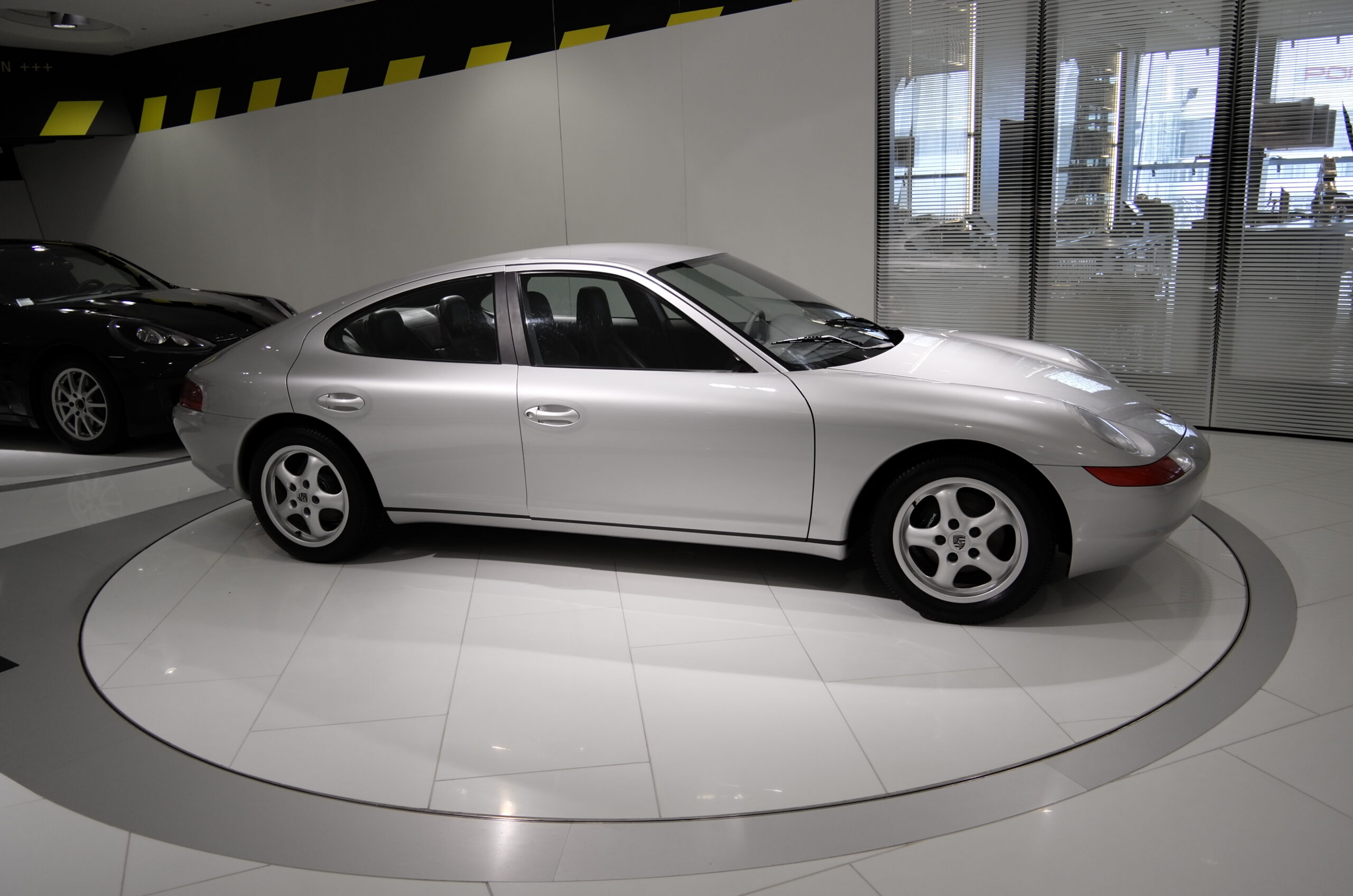
6. **Porsche 989**Long before the sleek Panamera graced Porsche showrooms, there was another audacious four-door concept, a whispered secret that tantalized the brand’s loyalists: the Porsche 989. This wasn’t just an exercise in design; it was a serious flirtation with a front-engined, rear-drive sports saloon, an idea that challenged the very core of Porsche’s rear-engined dogma. Imagine elongated 911 cues, a design language unmistakably Porsche, stretched to accommodate a different vision.
Under the bonnet, the 989 was slated to feature a powerful 300 horsepower flat-six engine, positioned upfront, a radical departure for the brand. The interior promised genuine seating for four long-legged adults, blending practicality with Porsche’s renowned driving dynamics. Prototypes were already undergoing rigorous durability runs, a clear indication of how far along the development process was. This was no mere styling buck; it was a fully functional, highly engineered machine, poised for production.
But fate, as it often does, intervened with cruel timing. A global recession hit, savagely slashing sports-car sales across the industry. In the aftermath, then-CEO Arno Bohn received the boot, and the ambitious 989 project was summarily cancelled. The idea, however, was too compelling to simply die. It hibernated within Porsche’s collective consciousness until 2009, when the Panamera finally picked up the baton, proving that the dream of a four-door Porsche, first envisioned by the 989, was simply too good to abandon forever.
Read more about: Unearthing Gems: 15 Undervalued 1980s Sports Cars That Are Smart Buys for Collectors Today
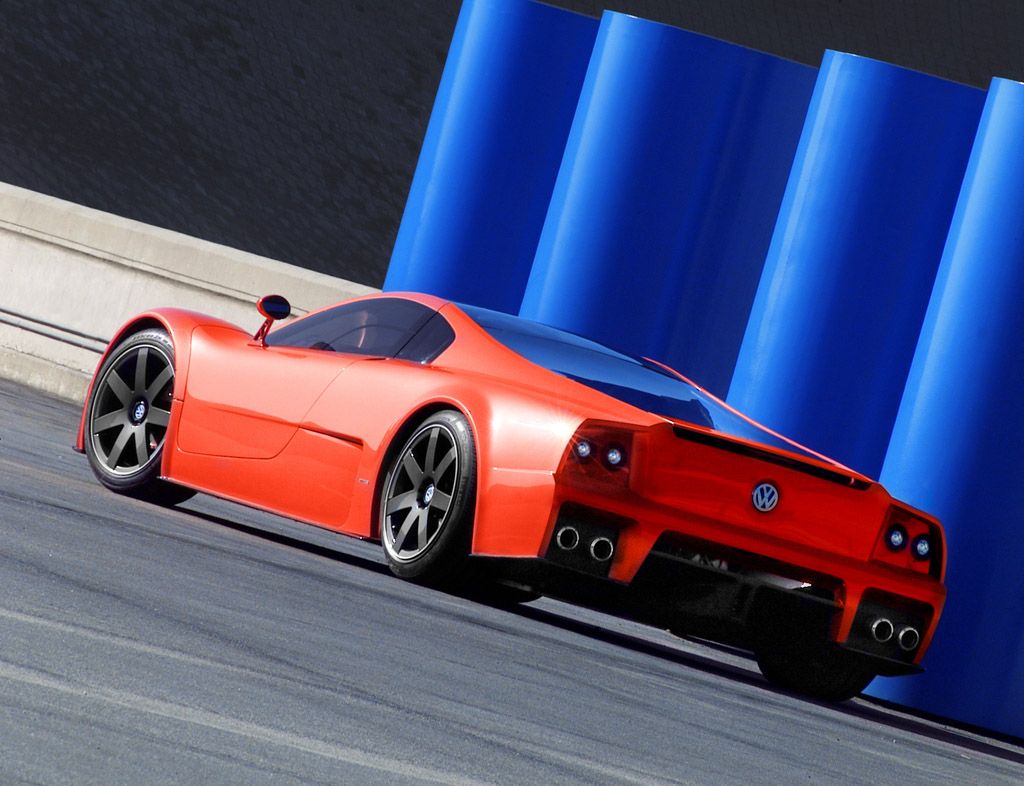
7. **Volkswagen W12 Nardò**The Volkswagen W12 Nardò is a truly fascinating chapter in automotive history, a testament to what can be achieved when raw ambition meets peerless Italian design. Originally conceived by Italdesign for Volkswagen, this concept evolved into the utterly sensational 600 horsepower Nardò. It wasn’t just a pretty face; this machine was built for purpose, and it delivered spectacularly, setting a still-standing 24-hour world speed record. We’re talking 7,740 km covered at an astonishing average speed of 322 km/h. Imagine that for a whole day straight!
This record-breaking feat was born from the vision of Ferdinand Piëch, Volkswagen’s then-chairman, who harbored a fervent desire for a Volkswagen-badged supercar to sit atop the company’s burgeoning automotive empire. The W12 Nardò was his chosen champion, a rolling statement of engineering prowess and ultimate performance for the people’s car brand. It showcased not only VW’s technical capabilities but also its ambitions to play in the supercar league.
However, the best-laid plans of mice and ambitious chairmen often go awry. Intense lobbying from the likes of Lamborghini and Audi – both under the VW Group umbrella – ultimately convinced Piëch to keep the truly halo engines and supercar badges firmly within Sant’Agata and Neckarsulm. The notion of a Volkswagen supercar was simply too much of a threat to their established prestige. And so, the record-shattering W12 Nardò, a monument to speed and engineering, was consigned to a quieter existence, now sleeping soundly within VW’s magnificent ZeitHaus museum, a forgotten record-holder, a king without a crown.
Continuing our journey through the annals of unproduced automotive brilliance, we uncover seven more visionary concepts – including America’s ‘Almost-Bugatti’ and BMW’s shape-shifting marvel – examining their revolutionary features and the often-heartbreaking corporate decisions that consigned them to the history books rather than our driveways.
Car Model Information: 2021 Buick Envision Preferred
Name: Volkswagen W12
Caption: Goodwood Festival of Speed
Manufacturer: Volkswagen
Engine: Volkswagen Group W-12 engine
Doors: Scissor doors
Production: 1997–2001
Class: Sports car
Layout: unbulleted list
Designer: Giorgetto Giugiaro
Transmission: 6-speed manual
Wheelbase: 2530 mm
Abbr: on
Height: 1100 mm
Width: 1920 mm
Length: 4400 mm
Categories: All articles needing additional references, Articles needing additional references from June 2018, Articles with short description, Italdesign concept vehicles, Rear mid-engine, all-wheel-drive vehicles
Summary: The Volkswagen W12 was a series of concept cars created by Volkswagen Passenger Cars from 1997 to 2001.
Get more information about: Volkswagen W12
Buying a high-performing used car >>>
Brand: Volkswagen Model: W12 Nardò
Price: $19,500 Mileage: 52,471 mi.
Read more about: Beyond the Hype: 11 Enduring Wagons Engineered to Outlast Most New Models Today
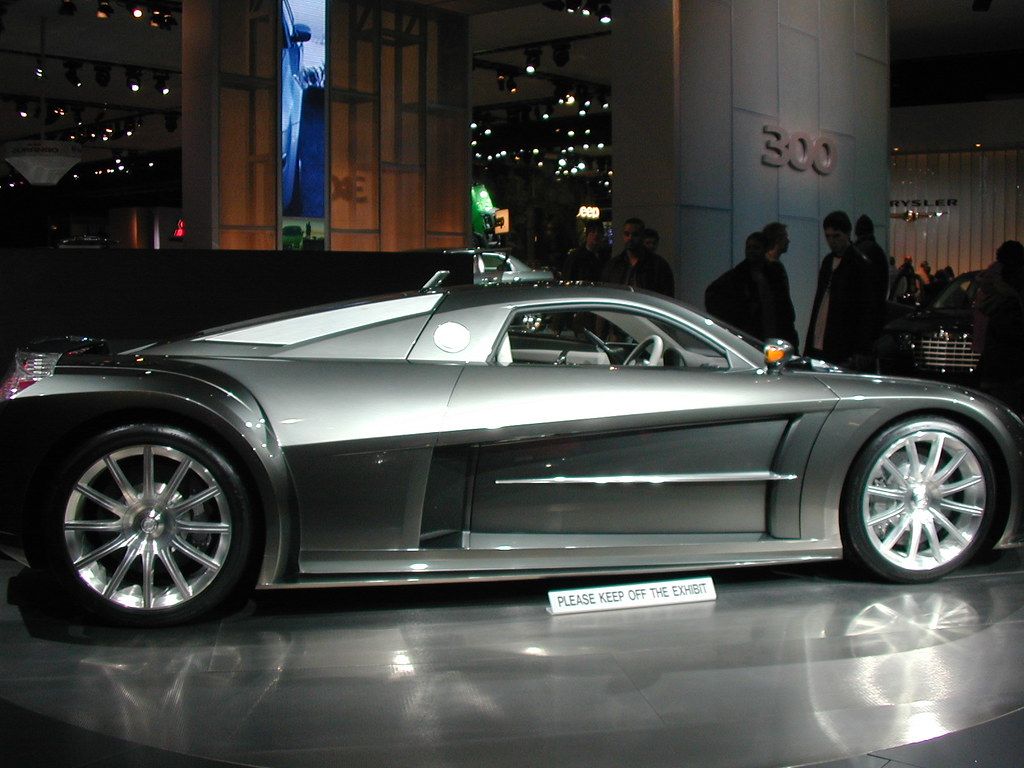
8. **Chrysler ME Four-Twelve**The Chrysler ME Four-Twelve – its very name a coded declaration: Mid-Engine, Four turbos, Twelve cylinders. This was no mere styling exercise; it was an audacious challenge to the hypercar elite. Daimler-Chrysler engineers shoe-horned an AMG 6.0-litre V12 into a bespoke carbon fibre tub, then cranked output to 850 horsepower. Projected performance was mind-bending: 0-100 km/h in 2.9 seconds, with a top speed designed to blur reality.
This American beast was a technological marvel, showcasing pinnacle engineering prowess from a brand not typically associated with such ambition. Imagine the audacity of Chrysler, purveyors of minivans, unleashing a machine designed to humble Ferrari and McLaren. The ME Four-Twelve was raw power draped in sharp, aggressive lines, a symphony of carbon, aluminium, and screaming turbochargers. It promised an American contender in the ultra-exclusive hypercar arena.
However, as is often the tale, cold realities of corporate finance crashed down. Marketing pushed hard, but bean-counters ran numbers harder. Development screeched to a halt when the brutal truth emerged: each unit would cost more than a Bugatti Veyron – an astonishing sum – yet wear a Chrysler badge. Perceived value wasn’t there, and an epic chapter in American automotive history was, tragically, left unwritten. America’s definitive ‘Almost-Bugatti,’ a contender whose ambition tragically outweighed its badge equity.
Read more about: Shelved But Recalled: 10 Mid-Engined American Concepts That Pushed Performance Boundaries

9. **Nissan IDx NISMO**Picture this: a car designed not just *for* enthusiasts, but *by* them. That was the magic woven into the Nissan IDx NISMO, a concept born from PlayStation’s Gran Turismo community. Unveiled in 2013, it was a pure shot of automotive nostalgia, a brilliantly executed homage to beloved box-flared Datsuns. It packed all the right ingredients: a featherlight 1,200-kg chassis, pure rear-wheel drive, and a compact footprint roughly Miata-sized – the perfect recipe for unadulterated driving pleasure.
Under that beautifully angular, retro-modern bonnet, Nissan had plans for a truly engaging powertrain. Power was slated at 200 horsepower, courtesy of a peppy 1.6-litre turbocharged engine. And the icing? A manual gearbox! In an era dominated by paddle-shifters, this was a clear signal to driving purists: this car was built for *you*, for joy of engagement, for visceral connection. It was a digital Datsun reboot, brimming with analogue soul.
Reception at motor shows was electric; crowds clamoured, forums buzzed, and the collective cry for production was deafening. Yet, in the boardroom, profit projections didn’t sing the same sweet tune. Nissan pivoted hard towards the booming SUV market, relegating the IDx NISMO to beautiful dreams. To this day, any discussion of missed opportunities includes a passionate plea: “Just build the IDx already!” It remains a tantalizing glimpse of a future that, sadly, never accelerated past the concept stage.
Car Model Information: 2021 Buick Envision Preferred
Name: Nissan IDx
Caption: Tokyo Motor Show
Manufacturer: Nissan
Aka: Nissan IDx Freeflow
Production: 2013 (concept car)
Designer: David Beasley / Nissan Design Europe + Global Nissan Design Center
BodyStyle: coupé
Layout: Front-engine RWD
Related: NISMO
Engine: Nissan MR engine#MR16DDT,Turbocharger
Transmission: 6-speed manual , CVT
Length: 13.5 ft
Abbr: on
Disp: flip
Width: 5.6 ft
Height: 4.3 ft
Weight: 2900 lb
Predecessor: Datsun 510
Sp: us
Categories: Articles with short description, Nissan concept vehicles, Retro-style automobiles, Short description matches Wikidata
Summary: The Nissan IDx is a concept car introduced at the 2013 Tokyo Motor Show by Nissan. It is supposedly inspired by the Datsun 510. The IDx is Nissan’s answer to the “RWD tuner craze” that is ongoing and a direct competitor to the Hyundai Genesis coupe & Scion FRS/Subaru BRZ. The IDx is aimed at young buyers and racing gamers alike. A few quirks the car has that might not make production are the “side view mirrors” that are designed to be cameras rather than traditional mirrors as well as the side-exit exhaust. There is a possibility that Nissan is building more IDx concepts because there are numbers (003 and 004) instead of 001 and 002 on each of the concepts. With Nissan’s looming decision to discontinue several current models such as the Quest, Xterra, Cube and possibly the Juke there is expected room in Nissan’s lineup for a new entry-level sports car.
Get more information about: Nissan IDx
Buying a high-performing used car >>>
Brand: Nissan Model: IDx NISMO
Price: $19,500 Mileage: 52,471 mi.
Read more about: Beyond the Showroom: Unveiling 14 Visionary Vehicle Prototypes That Never Saw Production

10. **Lancia Fulvia Concept**Ah, Lancia. A name that whispers tales of rally glory, exquisite design, and Italian elegance. The 2003 Fulvia Concept, styled by Centro Stile, was a passionate ode to that illustrious past, a stunning revival promising to rekindle the brand’s faded flame. It was built upon humble Fiat Barchetta underpinnings, meticulously shaved to a svelte 1,000 kg, then draped in exquisite throwback curves harking back to the original’s timeless beauty. Inside, attention to detail was captivating, with a gorgeous wood-rim steering wheel and perfectly drilled pedals.
This wasn’t just a flight of fancy; the Fulvia Concept was a tangible promise. Production tooling was costed, the business case made, and the project was, astonishingly, approved. Lancia fans, a loyal and long-suffering breed, dared to dream of a return to form, a true driver’s car with undeniable heritage. The vision was clear: a lightweight, engaging coupe celebrating Lancia’s glorious past while offering modern thrills. It was a beacon of hope for a brand that had long drifted through badge-engineered anonymity.
But then, the corporate axe fell, wielded by Sergio Marchionne. Funds earmarked for the Fulvia were abruptly redirected to more pragmatic city cars. The result was heartbreaking: rally fans mourn the loss of a true spiritual successor, and Lancia slipped further into limbo. However, a flicker of hope remains! Recent whispers and spy shots suggest Stellantis might be cooking up a much-anticipated comeback. Could this sleeping icon finally awaken? We can only pray.
Car Model Information: 2021 Buick Envision Preferred
Name: Lancia Fulvia
Caption: Series II Lancia Fulvia Berlina
Manufacturer: Lancia
Production: 1963–1976
Designer: Ercole Spada
Class: Compact executive car
BodyStyle: Sedan (automobile)
Layout: Front-engine, front-wheel-drive layout
Engine: Petrol engine,Lancia V4 engine,1,199 cc Lancia V4,1,216 cc Lancia V4,1,231 cc Lancia V4,1,298 cc Lancia V4,1,584 cc Lancia V4
Transmission: manual transmission
Wheelbase: 2480 mm
Abbr: on (Sport)
Length: 4110 mm
Width: 1555 mm
Height: 1400 mm
Predecessor: Lancia Appia
Successor: Lancia Beta,Lancia Trevi
Sp: uk
Categories: 1970s cars, Articles with short description, CS1: unfit URL, CS1 Dutch-language sources (nl), CS1 French-language sources (fr)
Summary: The Lancia Fulvia (Tipo 818) is a car produced by Lancia between 1963 and 1976. Named after Via Fulvia, the Roman road leading from Tortona to Turin, it was introduced at the Geneva Motor Show in 1963 and manufactured in three variants: Berlina 4-door saloon, 2-door Coupé, and Sport, an alternative fastback coupé designed and built by Zagato on the Coupé floorpan.
Fulvias are noted for their role in motorsport history, including a 1972 win of the International Rally Championship. Road & Track described the Fulvia as “a precision motorcar, an engineering tour de force”.
Total production number of the Fulvia berlina was 192,097 cars, of the Fulvia Coupé 139,797 cars, and of the Fulvia Sport 7,102 cars.
Get more information about: Lancia Fulvia
Buying a high-performing used car >>>
Brand: Lancia Model: Fulvia Concept
Price: $19,500 Mileage: 52,471 mi.
Read more about: 15 Undervalued 1970s Classic Cars That Are Smart Buys for Enthusiasts Today
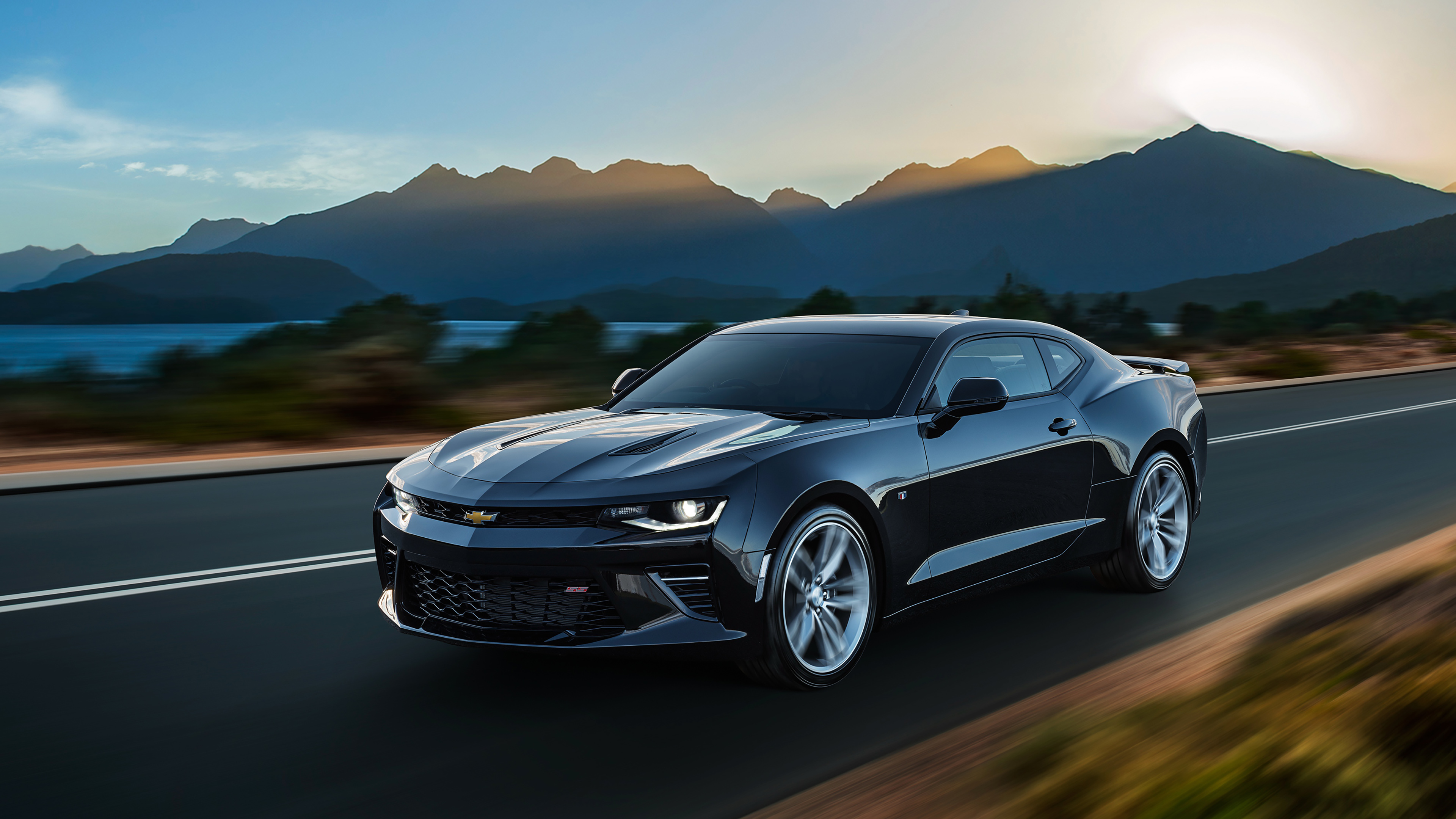
11. **Chevrolet Corvette CERV III**Long before the mid-engine C8 Corvette became reality, General Motors spent decades flirting with the idea, constantly teasing enthusiasts. Arguably, the crown jewel of those tantalizing experiments was the 1990 CERV III. This wasn’t just a prototype; it was a veritable moonshot, a futuristic marvel wrapped in a sleek carbon-Kevlar body, a testament to GM’s boundless ambition and engineering prowess. It truly represented the ultimate mid-engine tease, a machine so far ahead of its time it almost hurts to think about.
Beneath its impossibly low-slung body lay a powertrain that could make supercars blush: a mighty 650 horsepower twin-turbo LT5 engine, a beast for its era. But the CERV III was more than raw power; it was a rolling laboratory of advanced technology. It boasted active suspension for peerless handling, all-wheel steering for uncanny agility, and even rudimentary torque-vectoring – a technology so new it barely had a name then. This car redrew the map of automotive possibility.
However, sheer sophistication came with a truly stratospheric price tag. The estimated build cost? A staggering $300,000 per unit… in 1990 dollars! This astronomical figure ultimately proved to be the CERV III’s undoing, condemning the program to history. Enthusiasts, having witnessed such a visionary machine, were left with crushing disappointment, forced to wait three decades for GM to finally commit to a production mid-engine Corvette. The CERV III remains a ghostly reminder of just how long the dream simmered, a groundbreaking car simply too ambitious and too expensive.
Car Model Information: 2021 Buick Envision Preferred
Name: Chevrolet Corvette (C4)
Caption: 1994 Chevrolet Corvette
Manufacturer: Chevrolet
Production: January 3, 1983 – June 20, 1996
ModelYears: 1984–1996
Predecessor: Chevrolet Corvette (C3)
Successor: Chevrolet Corvette (C5)
Class: Sports car
Assembly: Bowling Green, Kentucky
BodyStyle: targa top,Convertible (car)
Layout: Front-engine, rear-wheel-drive layout#FMR
Platform: GM Y platform
Wheelbase: cvt
Length: cvt
Width: cvt
Height: Coupe: {{cvt,46.7,in,mm
Transmission: automatic transmission,Overdrive (mechanics),GM 4L60-E transmission,ZF Friedrichshafen
Engine: {{cvt,350,cuin,L,1,Chevrolet small-block engine (first- and second-generation)#L83
Weight: cvt
Designer: Jerry Palmer
Related: Callaway Cars#C4 (RPO B2K Callaway Twin Turbo Corvette),Callaway Cars#C4 (RPO B2K Callaway Twin Turbo Corvette),Callaway Cars#C4 (RPO B2K Callaway Twin Turbo Corvette),Callaway Cars#C6 (Callaway SuperNatural Corvette),Callaway Cars#C4 (RPO B2K Callaway Twin Turbo Corvette)
Categories: 1990s cars, All articles with dead external links, All articles with unsourced statements, Articles with dead external links from November 2016, Articles with permanently dead external links
Summary: The Chevrolet Corvette (C4) is the fourth generation of the Corvette sports car, produced by American automobile manufacturer Chevrolet from 1983 until 1996. The convertible returned, as did higher performance engines, exemplified by the 375 hp (280 kW) LT5 found in the ZR1. In early March 1990, the ZR1 would set new records for the highest average speed over 24 hours at over 175 mph (282 km/h) and highest average speed over 5,000 miles at over 173 mph (278 km/h). With a completely new chassis, modern sleeker styling, and other improvements to the model, prices rose and sales declined. The last C4 was produced on June 20, 1996.
Get more information about: Chevrolet Corvette (C4)
Buying a high-performing used car >>>
Brand: Chevrolet Model: Corvette CERV III
Price: $19,500 Mileage: 52,471 mi.
Read more about: Shelved But Recalled: 10 Mid-Engined American Concepts That Pushed Performance Boundaries

12. **BMW GINA Light Visionary Model**Okay, settle in, because we’re about to talk about *the* most jaw-dropping, mind-bending concept car I’ve ever seen. No, it’s not just because I’m a certified Bimmer boy; when the BMW GINA Light Visionary Model burst onto the scene in 2008, my jaw literally dropped. It was, and still is, an absolute marvel that sent shivers down my spine, particularly when its truly alive bonnet opened to reveal the engine beneath. Forget sheet metal; GINA redefined what a car body could even be
The acronym GINA stands for Geometry and Functions In ‘N’ Adaptions, perfectly encapsulating this machine’s revolutionary spirit. BMW ditched conventional metal panels, opting instead for a four-way stretch fabric, almost like a second skin, pulled taut over a meticulously crafted aluminum space frame. Here’s where it gets wild: electro-hydraulic struts allowed this fabric skin to morph and adapt in real time. Imagine the bonnet “unzipping” for engine checks, headlamps peeking out like curious eyelids, or rear contours subtly changing for aerodynamics. This car was alive, dynamic, and undeniably creepy in the most captivating way.
While GINA was never destined for production, its radical vision wasn’t wasted. Lessons learned from its flexible architecture fed directly into BMW’s groundbreaking i-series lightweight thinking, proving innovation can transcend traditional materials. It gave designers electrifying permission to question sheet-metal dogma, pushing boundaries. No other cancelled concept car looks quite like this, and while some BMWs are scary, the GINA, with its shifting, breathing form, is definitely at the very least unnervingly beautiful and utterly unforgettable.
Car Model Information: 2021 Buick Envision Preferred
Caption: Munich,Germany
Name: BMW Gina
Manufacturer: BMW
Class: Concept car,sports car
Designer: Chris Bangle
Categories: All articles with dead external links, Articles with dead external links from July 2017, Articles with permanently dead external links, Articles with short description, BMW concept vehicles
Summary: The GINA Light Visionary Model is a fabric-skinned shape-shifting sports car concept built by BMW. GINA stands for “Geometry and functions In ‘N’ Adaptions”. It was designed by a team led by BMW’s head of design, Chris Bangle, who says GINA allowed his team to “challenge existing principles and conventional processes.” Other designers include Anders Warming.
Construction began in 2001, with the finished car being presented in 2008.
Get more information about: BMW GINA
Buying a high-performing used car >>>
Brand: BMW Model: GINA Light Visionary Model
Price: $19,500 Mileage: 52,471 mi.
Read more about: Beyond the “Snobbiest Ride”: Deconstructing Automotive Elitism and Driving Towards Inclusive Mobility

13. **Renault Espace F1**Alright, buckle up, because we’re about to dive headfirst into a concept that proves some wildest automotive ideas are born from sheer, unadulterated lunacy, possibly fuelled by excessive fine French wine for breakfast. I present: the Renault Espace F1, arguably the most gloriously bonkers ‘school bus’ ever conceived. Built in 1994, this wasn’t just a tribute; it was a full-blown celebration of the Espace minivan’s 10th birthday and Renault’s staggering Formula 1 success. It was, quite simply, an F1 car disguised as a people carrier.
And when I say F1 car, I mean it. Renault didn’t just stick a fancy engine in; they packed a detuned Williams-Renault 3.5-litre V10, the very heart of a Grand Prix winner, into the Espace. This magnificent beast churned out a gargantuan 700 horsepower. The chassis was crafted from carbon fibre, it featured massive aerodynamic elements, and its stopping power came from carbon-ceramic brakes – serious racing kit. The result? This minivan could rocket from 0-200 km/h in a mind-boggling 600 feet, all while seating four lucky (or terrified) occupants in individual bucket seats, strategically placed *behind* the driver.
With a top speed of 312 km/h, this project proved utterly bonkers, even for the eccentric concept car culture of the 1990s. It existed in a glorious, fleeting moment, living one perfect summer gracing magazine covers and astonishing crowds. It was a defiant, joyful middle finger to automotive convention, a pure expression of ‘because we can.’ The Espace F1 never stood a chance of production, but it retired triumphantly to Renault’s museum, a roaring, V10-powered testament to the fact that sometimes, the best ideas are the ones that make absolutely no sense whatsoever. What a machine.
Read more about: Beyond the Bulletproof: A Curious Journey Through 14 Iconic State Carriages of the World
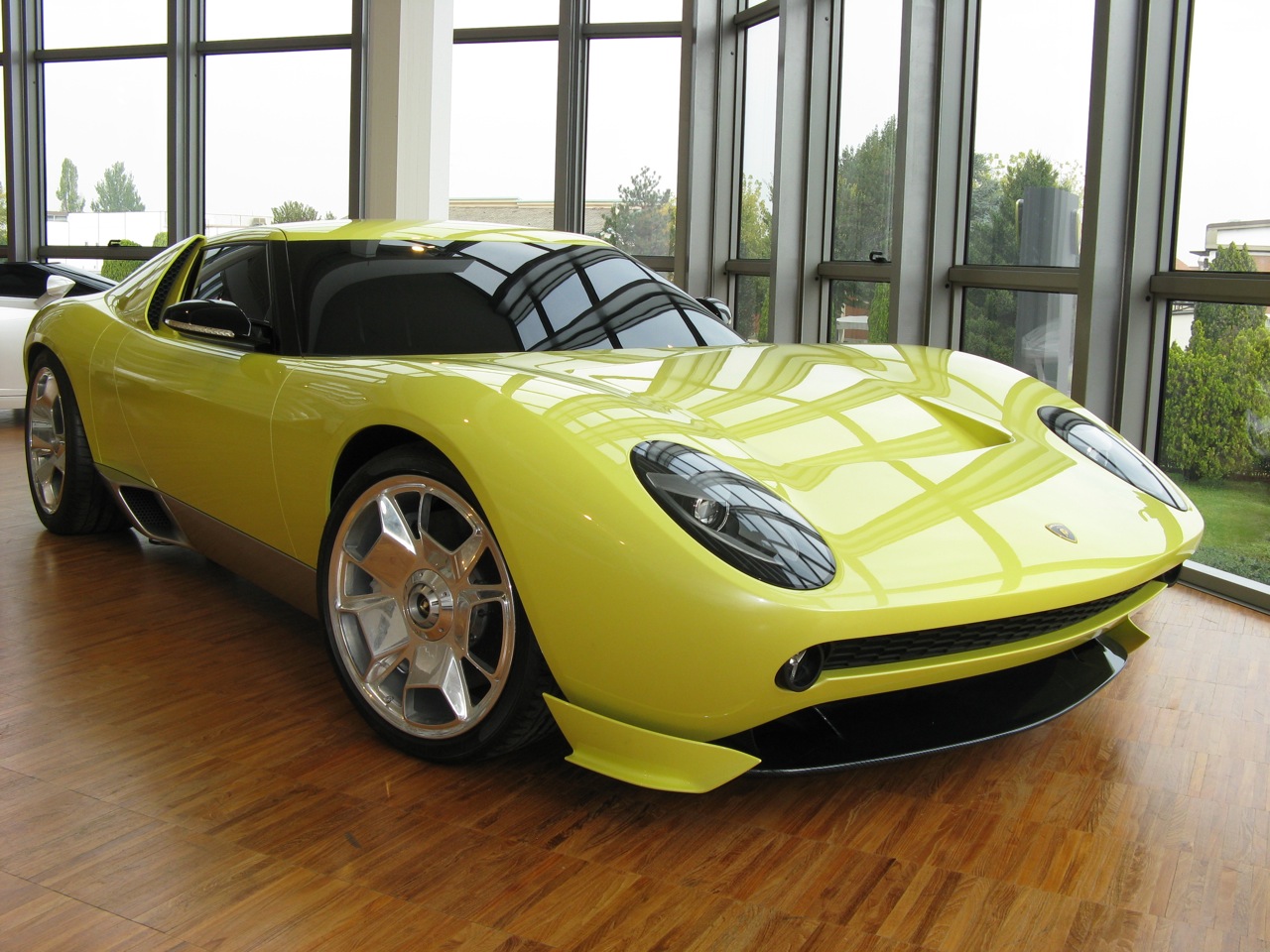
14. **Lamborghini Miura Concept**Finally, let’s wrap up our retrospective with a concept that managed to be both a respectful homage and a frustrating glimpse of what might have been: the Lamborghini Miura Concept. Unveiled in 2006, this stunning machine wasn’t just a new car; it was a heartfelt, modern reinterpretation of the legendary 1966 Miura, arguably one of the most beautiful cars ever designed. It was crafted to celebrate the original’s 40th anniversary, a nod to history that stirred the souls of Lamborghini purists and casual observers alike.
Styled by Lamborghini’s then-design chief, the masterful Walter de Silva, the concept performed a delicate dance between past and present. It flawlessly retained the iconic lines of the original Miura, including its impossibly low-slung stance, the sensuous, muscular haunches, and those distinctive headlight “eyelashes” that gave the original such character. Beneath its sculpted, instantly recognizable body, the Miura Concept was said to feature a powerful V12 engine, a fitting heart for such a magnificent beast, though Lamborghini kept the official specifications under wraps, adding to its mystique.
Despite widespread acclaim and adoration for its stunning, retro-inspired design, Lamborghini made the difficult decision not to push the Miura Concept into full production. Their rationale was rooted in a steadfast belief that Lamborghini should always be at the forefront of innovation, consistently pushing forward with entirely new models that would define the brand’s future, rather than simply revisiting past successes. It was a bittersweet moment for enthusiasts, a beautiful, powerful dream car consigned to the annals of history, forever admired as a perfect blend of heritage and audacious, unfulfilled promise. A truly magnificent ‘what if.’
Read more about: Forged in Fire: The Greatest Car-Brand Rivalries That Redefined Automotive Excellence
And so, our exhilarating journey through the hallowed halls of unproduced brilliance comes to a close. These fourteen magnificent machines, from America’s fire-breathing ‘Almost-Bugatti’ to BMW’s shape-shifting fabric marvel, stand as potent reminders that the automotive world isn’t merely about sales figures and quarterly reports. It’s about passion, about audacious engineering, about the unbridled imagination of designers and engineers who dared to dream of a future that, for various heartbreaking reasons, never quite materialized in our driveways. They are the legends that linger, the ‘what ifs’ that fuel our deepest gearhead fantasies, and the everlasting proof that sometimes, the coolest cars are the ones we could only ever dream of owning. Though many are relegated to museums or forgotten concept car shows, in our hearts, these unmade masterpieces roar on, louder and more vividly than ever, forever inspiring the next generation of dreamers.


